
The 1990s were a wild time that led to a wild aesthetic. To be fair, it was a relatively stable time globally. However, it was also an era full of militias and survivalists waiting for the end times to come. Our obsession with the apocalypse never stopped, but our guns have gotten much better. From roughly 1989 to 1995, the company Feather Industries marketed a series of firearms aimed at the SHTF market. That’s where the AT-22 comes from.
Feather Industries has seemingly changed hands a time or two since then. There’s still a site up showing off some of the best web designs of 1998. They also have posted some fairly zany models of the Feather Industries guns, complete with every made-in-China accessory you could ever want.
The original Feather Industries produced the AT-22 and the AT-9 rifles.
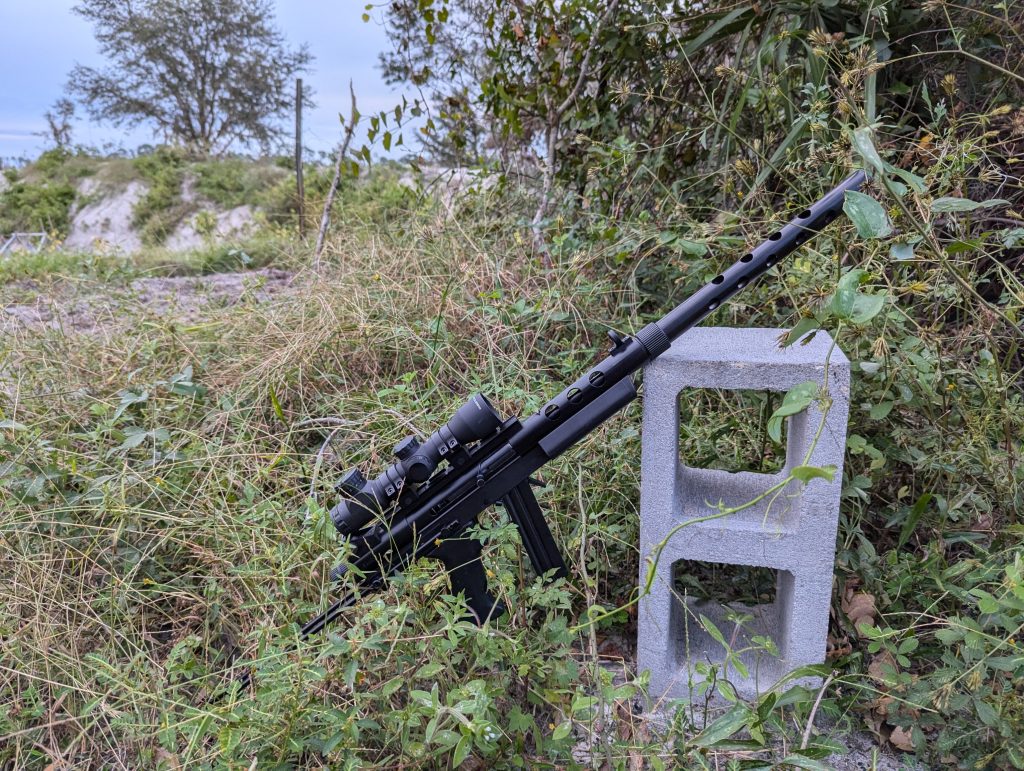
The AT-9 is a 9mm carbine. Over the years, they’ve produced a few variants of these two guns, including pistol variants, models with different finishes, and more. Numerous examples exist with varying barrel designs. The AT-9 seems to be the most common design and the most barebones.
The AT-22 and Me
I have my favored haunts in the tri-county area around my home. Most are gun stores or Mexican restaurants. In one spot in a town east of me, I’m always finding crazy guns. I’m not sure what’s in the water of this small burgh, but they always seem to have tons of awesome and weird guns. There I found an AT-22, the rimfire version, with four magazines, the original manual, and a fixed-power 4X Leapers scope.
The AT-22 series had the option of a Weaver rail, and the previous owner of this gun took advantage of that. I’ve left the optic on. It’s not wonderful, but it holds zero. Without the optic, we have a ringed front sight and a rear peep sight. The sight radius isn’t particularly long due to the AT-22’s design.
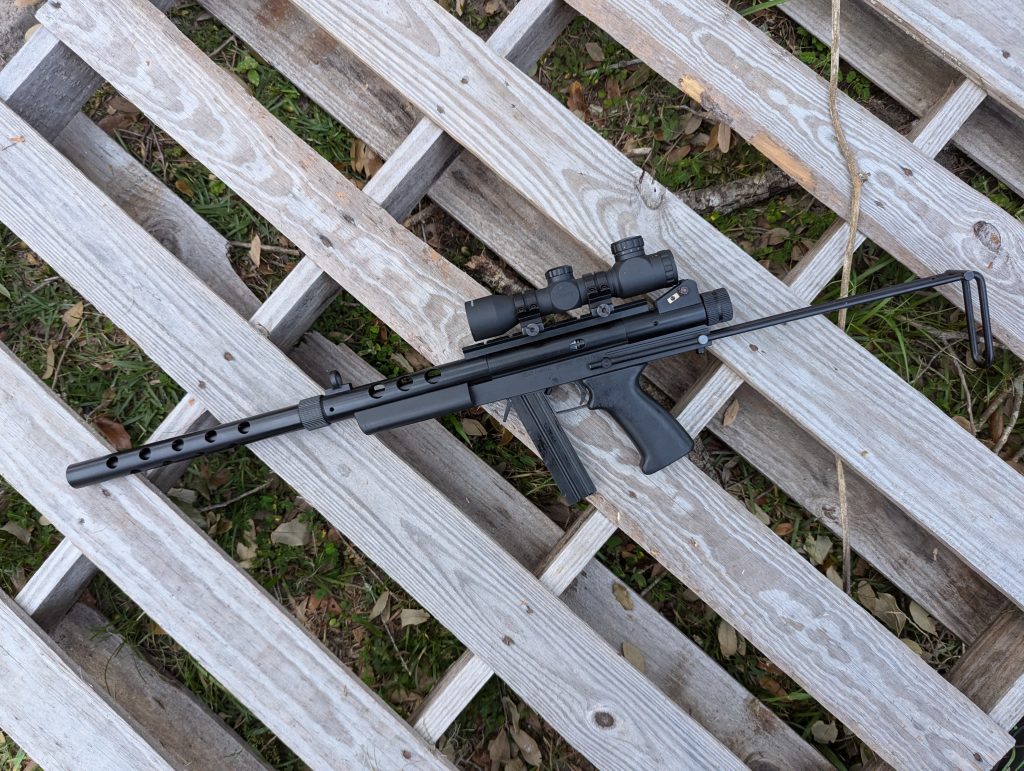
The barrel is easily removable and the gun has a takedown configuration. Since the barrel is removed so easily, it doesn’t make much sense to mount the front sight to the end. Removing the barrel requires you to simply twist a nut attached to the barrel shroud. That’s all that holds the tube in place. Unthread, pull up, and boom, the gun drastically shrinks in size.

The gun’s wire stock collapses making it even smaller. Now we have an incredibly compact, packable platform that can be easily tossed into a bug-out bag. In the days before the 10/22 Takedown, that was pretty revolutionary.
The AT-22 still activates that ‘neat’ factor in me. It’s more than just cool-looking, which is what that’s what drew me to the rifle.
Breaking Down the AT-22
These are simple blowback-operated semi-auto designs. The tubular receiver isn’t all that different from that of an M3 Grease Gun or a Sten. The only way to make this thing any simpler was to make it an open bolt design.
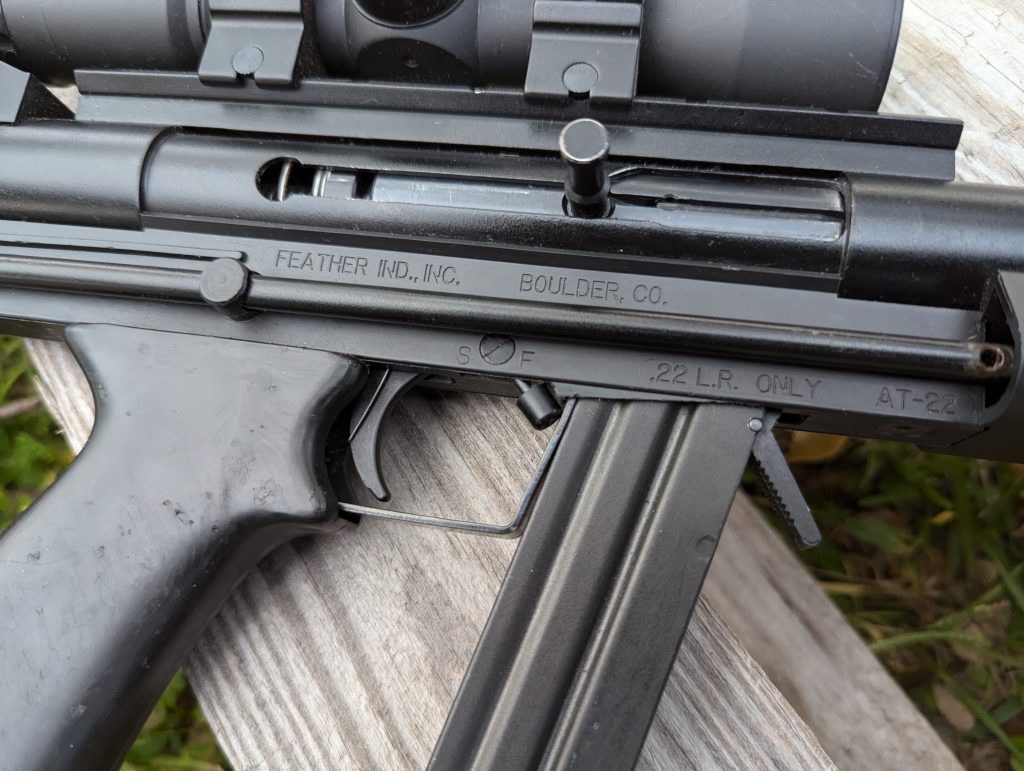
Everything about the AT-22 is crazy simple, and honestly, the simplicity is fun. The magazine release and lock is a simple tab that falls into a cutout in the magazine. The fire controls consist of a tab inside the trigger guard. You can lock the bolt open by pulling it rearward and pushing it from right to left. The rifle doesn’t lock open when the last round is fired.
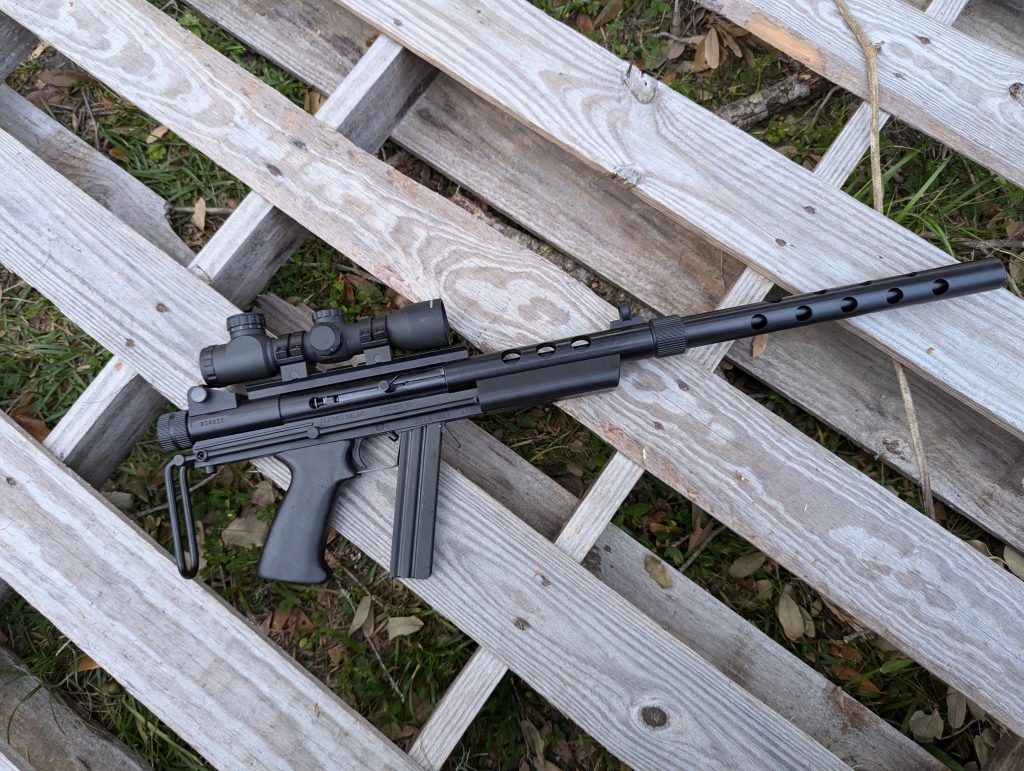
The stock has two positions: closed and extended. A simple tab locks the stock in one position or the other. The magazines are polymer and hold 20 rounds in a single stack configuration. The AT-22 is a neat-looking gun that’s very simple, and its appeal to hikers, small game hunters, and survivalists is evident. But does the gun run?
The AT-22 At The Range
The answer to that question is…mostly. The 1990s were an interesting time for blowback .22s. Ruger ruled the roost back then with their rifles and pistols, but a lot of folks were still trying to figure it out. Blowback-operated .22s were kind of hit-and-miss. Like almost all of the guns of that era, the AT-22 required some higher velocity, hot .22LR loads to run successfully.
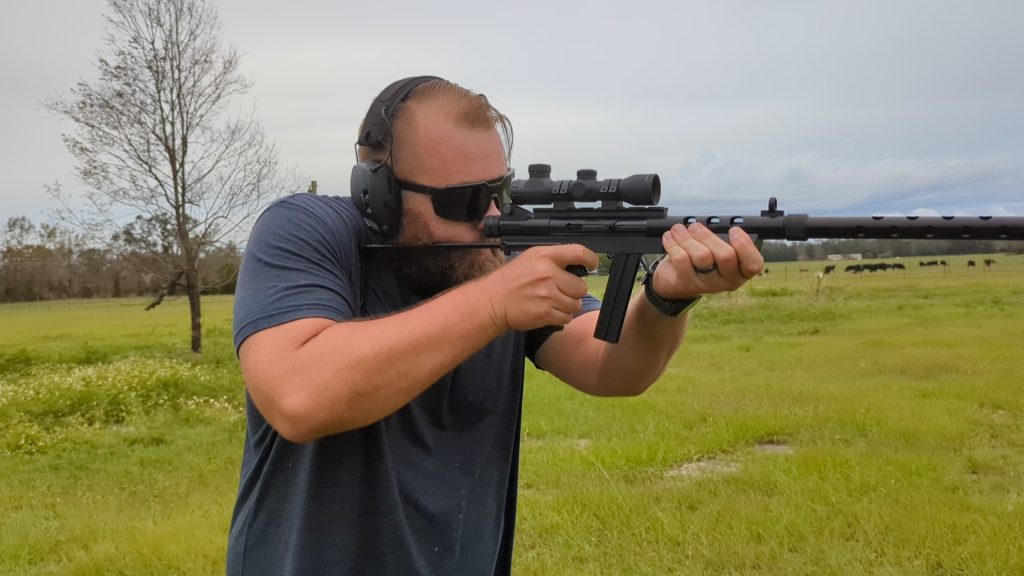
Even feeding it hot loads, the gun doesn’t always run well. The AT-22 mostly runs fine with CCI’s higher velocity stuff. I’d experience a malfunction less than once per magazine. The reliability is about the same as that of Federal Automatch and Aguila Super. Standard ammo is more of a crapshoot with multiple malfunctions per magazine.
Beyond the gun simply running, its accuracy is impressive. The 4X optic helps. At 100 yards, I can hit a 10-inch gong repeatedly and quickly. At 25 yards, the AT-22 can make a soda can dance. The wire stock moves a lot and doesn’t provide much stability, but with the recoil of .22LR is, of course, very light.
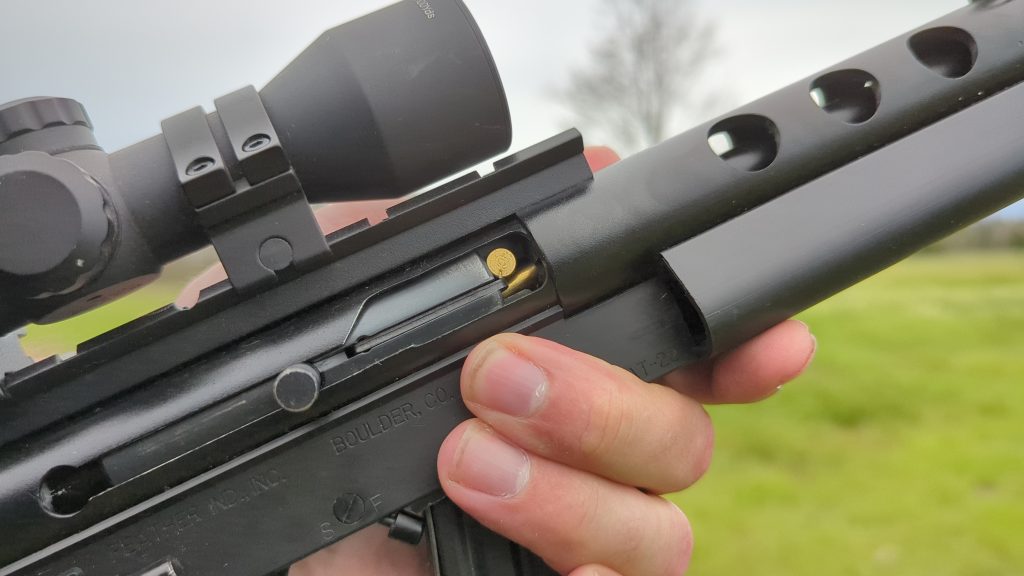
The trigger is mushy, but short and light. Reset is barely perceptible. It works, but it’s neither impressive or a downside in any way. At the end of the day, I enjoyed shooting the AT-22. It’s fun and very lightweight at 3.25 pounds. The 1990s aesthetic gives the gun some charm.
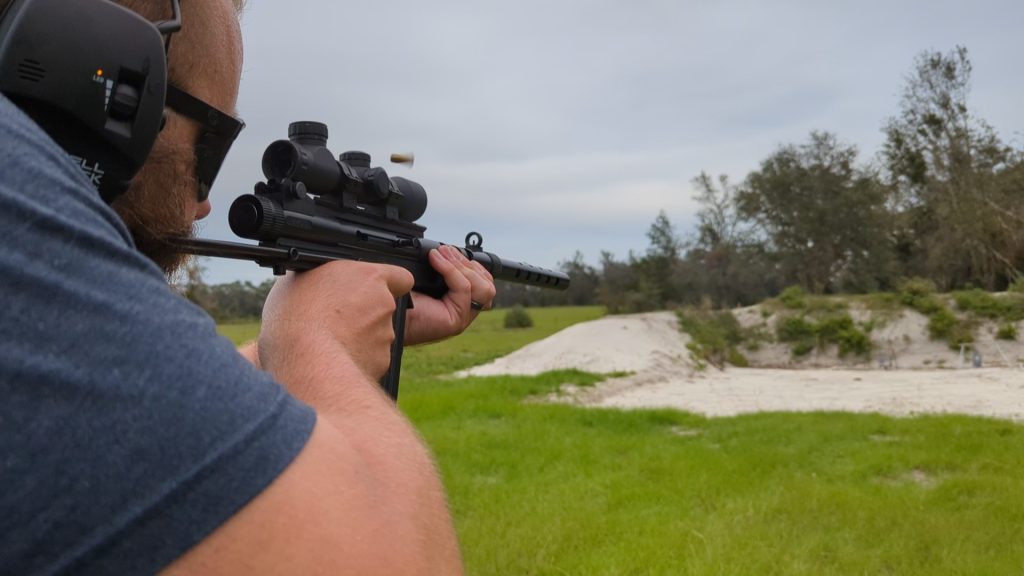
Would I bug out with it? I’d probably pick a Ruger 10/22 Takedown for a true survival scenario.
My AT-22 has become a gun I keep in my lets-kids-shoot-it arsenal. It’s got an amusing look that often entrances a young man with a Call of Duty fascination. The AT-22 is neat enough, and now I want the AT-9. And maybe the AT-22 pistol to top it all off.

Ruminating here…
I wonder if it may be better to have the front sight at the end of the removable barrel? That way, if barrel lockup isn’t super tight and consistent, at least the front sight would follow the end of the barrel. I’ve never had a takedown rifle, and I’ve wondered how repeatable the precision is. I expect it’s minute-of-critter within the limitations of the cartridge, which would be acceptable for what it is. Interesting.